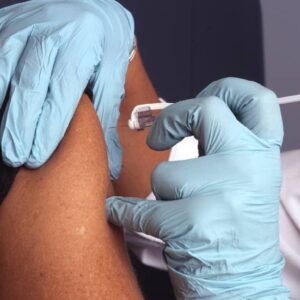How to Clean Your Baby’s Ear

Keeping your baby’s ears clean is critical. While bathing your infant, you can clean the outer ear and the skin around it. A washcloth or cotton ball and some warm water are all you’ll need.
Using cotton swabs or putting something inside the ear of your baby isn’t healthy. If the earwax inside the ear is not visible enough, you do not need to remove it.
For your baby, ear wax is safe because it is protective, lubricating, and has antibacterial properties. Removing it can result in potentially harmful harm.
How to clean your baby’s ear
Getting a clean baby ear doesn’t require much skill set, but it requires extreme caution and, in rare cases, a pediatrician’s help.
For a typical baby ear wax removal procedure, you’ll need a cotton ball that’s been soaked with warm water to clean your baby’s ears on a daily or frequent basis. With some warm (not hot) water, you can also use a gentle washcloth. Follow the following steps To clean your baby’s ear:
- Damp the washcloth or cotton bud in warm water(not hot water).
- Ring out the washcloth well if using one.
- Carefully wipe around the outer part of the baby’s ear and also wipe the behind the ear.
Do not stick the washcloth or cotton ball in your baby’s ear. This can lead to damage to the ear canals.
Follow these steps if your baby has been prescribed eardrops or choose to use them to extract wax buildup.
- With the affected ear facing up, lie your baby on its side.
- To open the canal, pull the lower lobe down and back gently.
- Place a drop or five in the ear (or the amount your pediatrician recommended).
Always use drops as per the advice of your pediatrician. Follow their guidance on how many drops to give your baby and how frequently to give them.
Precautionary tips
It is not safe to use cotton swabs on babies or young kids (we can not over emphasis the severity of this information). In fact, ear cleaning was the most plausible explanation for a child in the United States to be omitted from 1990-2010 in the emergency room for an ear injury.
There were more than 260,000 children affected. These accidents most often include an object trapped in the ear, perforated eardrums, and injuries to soft ear tissues.
The safest rule to bear in mind is to use a soft, wet washcloth to gently clean it away if you see any waxy residue or discharge on the outside of the ear.
Leave the part of the ear that is outside your view (the amount which you can’t see). For your baby, damage to the eardrum, hearing bone, or inner ear may all cause long-term health problems, so be watchful full how you stick objects in their ear.
Some Frequently Asked Questions
What can cause ear wax buildup in babies?
Earwax buildup is rare in babies. The ear canal typically generates the right amount of earwax that it needs. However, excessive earwax buildup may interfere with hearing in certain instances or cause pain or discomfort. As a sign of distress, your baby can tug at their ear.
Certain earwax accumulation triggers include:
- Using swabs made of cotton. These force the wax back in, and instead of extracting it, pack it down
- Fingers caught in your ear. It can build up if the ear wax is pushed back by the fingers of your baby.
- Wearing plugs for ears. Wax may be forced back into the ear by earplugs, causing the accumulation.
Don’t try at-home methods to prevent earwax accumulation. See a pediatrician if you’re worried about earwax accumulation. If your infant’s earwax needs to be removed, they will decide.
Is earwax hazardous?
Earwax is not harmful. It has many significant roles, including:
- Protecting the ear and ear canal,
- Keeping it dry and avoiding infection caused by germs
- Prevent penetration into the ear canal, which can cause pain or damage (if care is not taken)
- They trap dirt, dust, and other particles.
When is the right time to seek help?
Let the pediatrician of your baby know if your child is tugging their ears. You can browse for pediatricians in your region if you don’t already have a pediatrician. If you think a blocked ear canal makes it hard for your child to hear you, or if you detect any yellow-green discharge from the ear of your child, let them know as well. If it causes irritation, pain, or impairs your baby’s hearing, your doctor may remove the wax.
A pediatrician will typically extract the wax during a routine office visit without needing any further evaluation. In rare cases, the wax may need to be removed in the operating room under general anesthesia.
They can prescribe antibiotic eardrops for your baby if your pediatrician notices signs of an ear infection.
If you find bleeding from your baby’s ear after an item has been inserted in the ear canal, seek medical attention right away. If your child appears or behaves ill or their walking is unsteady, you can also seek medical assistance.
The takeaway
Keeping your baby’s ears clean is critical. In most instances, during your regularly scheduled bath time, you should clean the outer ear and the area around the ears. Everything you will need is a washcloth and warm water.
Although there are many products on the market specifically designed for a thorough baby ear wax removal process, many of them are not safe. Cotton swabs are not healthy for your baby either.
Let your pediatrician know if you find a significant amount of wax accumulation or are worried about your baby’s ears. If it has to be removed, they will assess it and advise you on the appropriate care.






